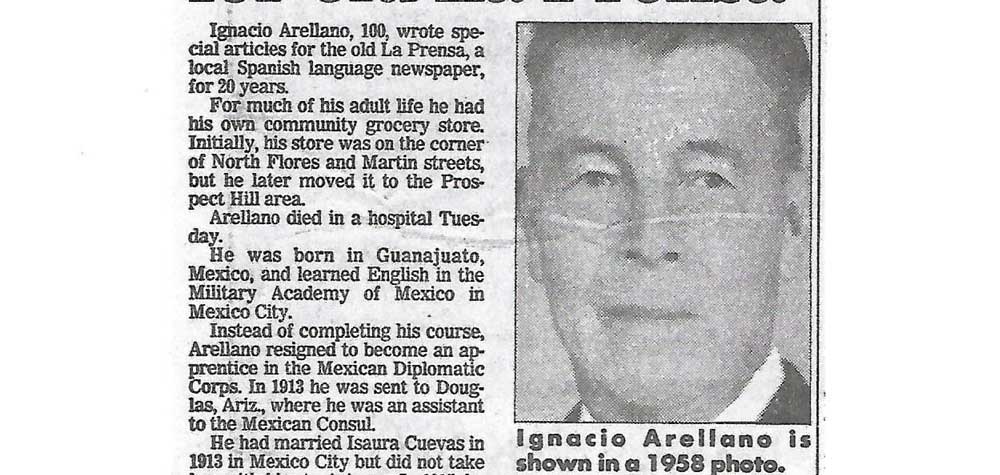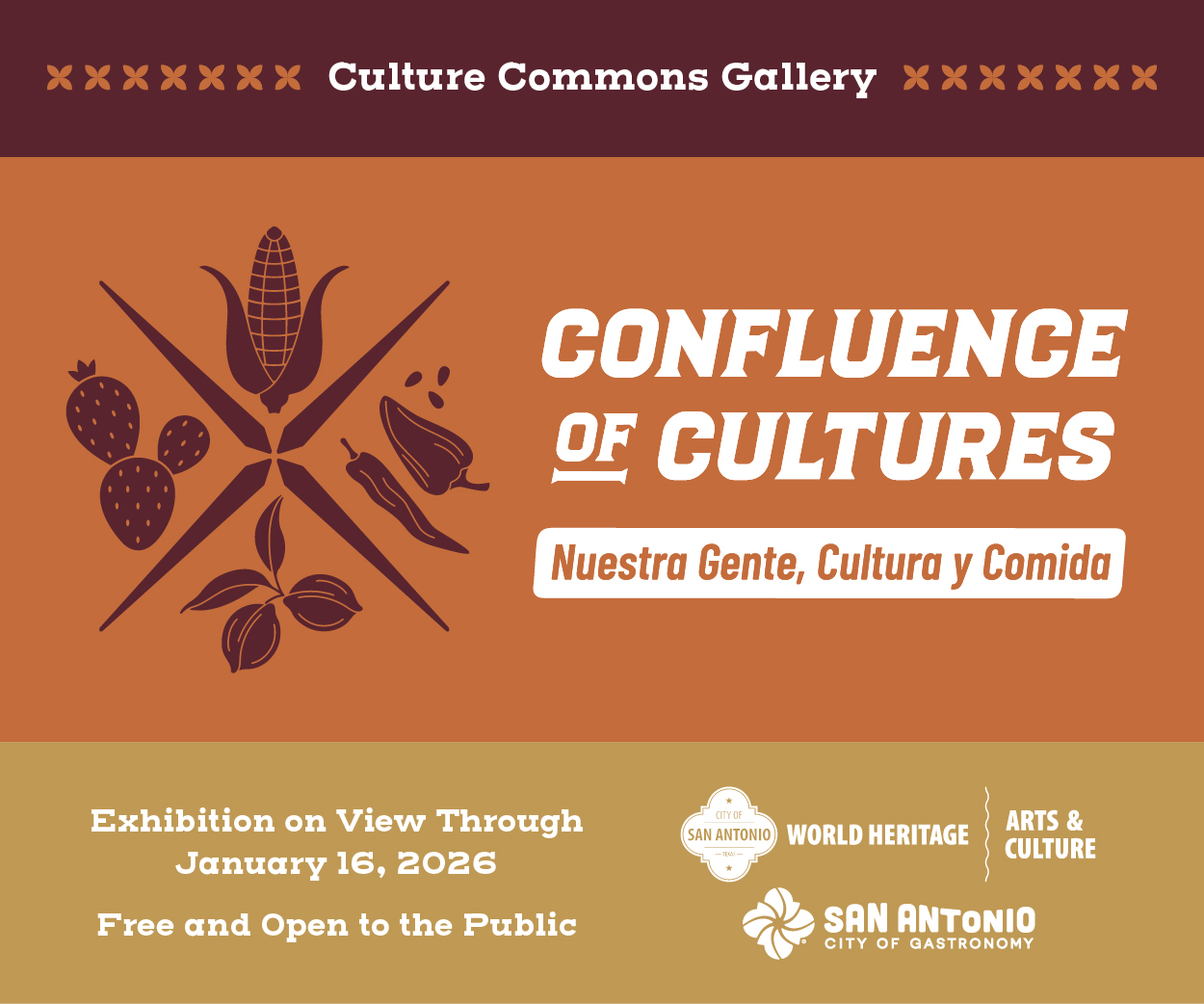Mr. Ignacio Arellano Sr. was a long time resident of San Antonio, Texas, having come to this city in November of 1914 and never been away from it except while on vacations or business trips.
He was born in the city of Guanajuato, capital of the state of Guanajuato, November 24, 1888, at 383 Calle Positos, only a house away from the one in which world renowned artist Diego de Rivera was born. He spent his early childhood there, entering Kindergarten at five years of age and leading an exciting life with boys his age. Life in such a small town was rather provincial. The existence of rich gold and silver mines provided fabulous riches for the wealthy classes and steady work for the miners, mine managers and administrators. Cultural events, such as operas and theater shows presenting the latest productions from Mexico City, were available for the leisure class. Nearby haciendas maintained an abundant supply of livestock and agricultural products.
All in all, though life was rather “pastoral”, it was not such a bad one.
Mr. Arellano’s family decided to move to Leon, a rather, by comparison, “bustling” city. This was around 1895. At the age of 12, another move was made, this time to Guadalajara, in Jalisco.Guadalajara was far from being the city of importance it now is. Yet another move was made, to San Juan De Los Lagos, site of the famous religious shrine venerated throughout all of Mexico.
In 1905, Mr. Arellano’s mother decided on a drastic move to the great metropolis, Mexico City. With a population of not quite a half million persons, Mexico City was the center of government, culture, industry and financial and other aspects of matters that determine the nature of a country aspiring to progress.
Naturally, Mr. Arellano was impressed by all the, to him, novelties of big city life. Street lighting, street cars, handsome horse carriages, automobiles, in their “primitive stage”, theaters, beautiful parks, etc., contributed to make life in the city exciting. Mr. Arellano worked at various places to be able to attend school, in evening classes, in his effort to improve his position in life. Among jobs he held were at the famous bakery, EL MEJOR PAN, located at the corner of Nuevo Mexico and Balderas streets. This business firm had some one hundred outlets for its famous product. Another job was at a blacksmith’s, involving rather strenuous working conditions.
Among several schools attended was the Escuela Nacional De Comercio, later known as the Doctor Mora School, located across from the historic Ciudadela, later to become involved in the Decena Tragica of 1913. Mr. Arellano’s ambition and determination resulted in his becoming an employee at the Secretaria De Relaciones Exteriores, Mexico’s State Department.
Youthful enthusiasm for military life, judged by colorful parades and the elegant uniforms worn by the federal army, led Mr. Arellano to give up his job at the Secretaria, and apply for registering entrance to the Escuela Militar De Aspirantes in Tlalpan, D.F. The institute was a sort of Officer’s Candidate School, granting a Second Lieutenant’s commission upon the completion of a two year course. During his brief stay there, only four months, he realized a military career “was not for him”. Mr. Arellano had as classmates several youngsters who went on to become full fledged generals in the Federal Army, such as Manuel Avila Camacho and Virgilio Culebro.
Mr. Arellano was able to return to the Secretaria De Relaciones where he remained for some time. In 1912 he married a girl from Puebla, who attended the same evening classes taught by Mrs. Elodia Gonzalez. Mr. Arellano and the future Mrs. Arellano belonged to the amateur theatrical group that presented several plays, among them “Llueven Hijos”, literally translated: “A Downpour of Children”.
In 1914, Mr. Arellano transferred to the consular service and, for his first assignment, was sent to the fourth-class Mexican Consulate in Douglas, Arizona. Everything went well for a while. However, as the prevailing revolution developed, unsettled and confusing situations caused the closure of consulates throughout the entire world. Mail was delayed, paychecks infrequent, pending business retarded, etc. This motivated Mr. Arellano to seek a return to Mexico City. Since railroad service was irregular, trains and track constantly being blown up or passenger trains held up, Mr. Arellano decided to try to return to his native country by detouring through San Antonio. During a stopover in that city, he met a personal friend of his who was then living in San Antonio. Said friend advised him not to attempt to return to the capital just then. Things were too unsettled and confusing, he explained. Instead he advised him to remain and send for his family, his wife and his nine month old son.
What was at first intended to be a temporary stay, while `things settled down in Mexico”, turned out to be his permanent residence, from November of 1914 until the present.
After settling in San Antonio, along with his wife, Isaura Arellano Cuevas and son Ignacio Arellano, Jr. According to his younger son, Fernando, he opened a business on Martin Street in downtown San Antonio between Flores and Main Streets, where he sold imported medicinal goods from Mexico. During the flood of 1922, the San Antonio River and San Pedro Creek overflowed and converged on his business and ruined all his merchandise, plus the building, which was made of adobe brick and deteriorated and fell due to the water that overtook the building. This forced him to close the business and move to the West Side of town where he opened a grocery store in the very house where he and his family lived on the corner of Perez and Cibolo Streets.
Mr. Arellano passed away in 1988 at the age of 100.
Ignacio Arellano Sr. His Life Story






